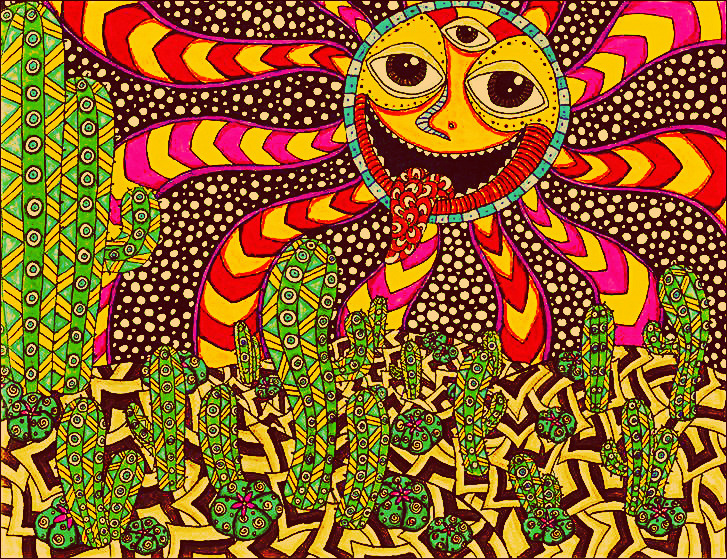Sacred Stalks – The San Pedro Cactus
Wachuma is a powerful hallucinogenic drug found throughout Peru, Bolivia and Ecuador. Wachuma (also spelled Huachuma) is called San Pedro in the West. Wachuma is derived from the San Pedro cactus, Trichocereus pachanoi, native to northwest part of South America. This tall, columnar cactus contains small amounts of mescaline which can be concentrated into a beverage. Shamans offered this bitter pukadelic beverage to supplicants for a powerful, moving hallucinogenic experience. The ancient believed wachuma was the gateway to communion with gods and spirits. For thousands or years, Andean populations have whispered of the miracle of wachuma. Ancient stone carvings by Chavins — a tribe that preceded the Incas — depict Chavins using wachuma in rituals led by shamans. When European explorers arrived on the continent, they named the plant San Pedro, after Saint Peter who is said to guard the entry to heaven. The preview picture above is a psychedelic sun communing with San Pedro cactus. However, this picture is more reminiscent of a Grateful Dead poster than a wachuma experience.
NOTE: Dateline: New Years Eve 2018. All events took place in the area around Trujillo, Peru where wachuma is legal. Nothing in this article advocates or encourages the use of wachuma or any other illegal drug. This article was written to educate and entertain.
When Jesuit priests introduced Christianity to Peru, they taught the Andeans that it was St. Peter (San Pedro in Spanish) who “held the keys to Heaven.” The native Indians responded that wachuma also held the keys to Heaven. Thus, wachuma was henceforth baptized with the Christian name of San Pedro. Those who live in Peru and partake, they all call it wachuma, perhaps spelled as huachuma.
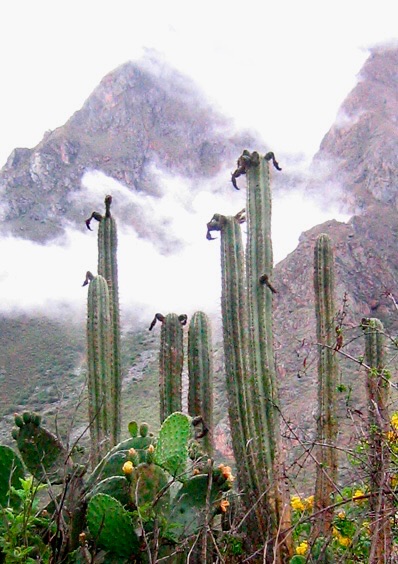
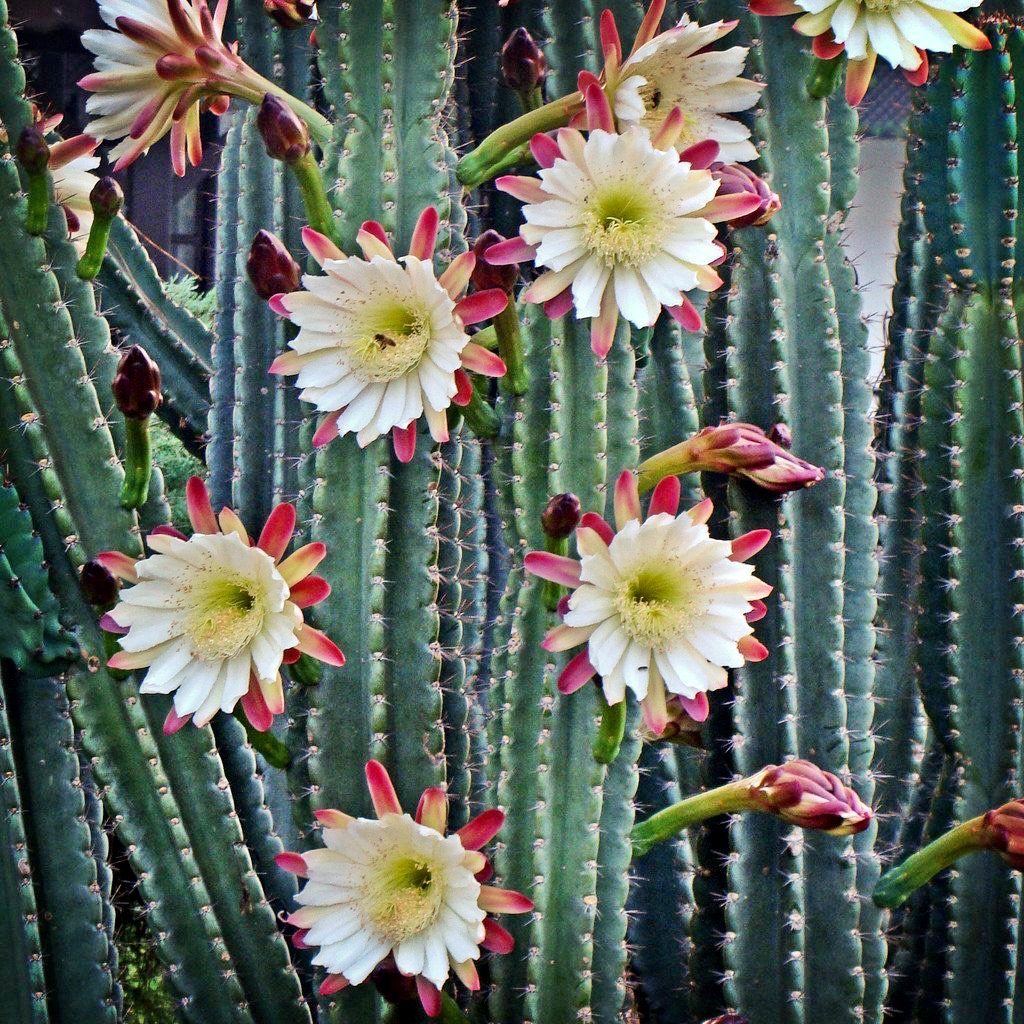
In a more modern context, the wachuma experience is known for being empathy centered experiences, with effects similar to MDMA, a drug that fills users with the sense uplifted joy. MDMA is also called ecstasy, a common drug among those who spend time on the nightclub dance floor. To its advocates, wachuma is potentially life-changing: promoting radical introspection, healing, and a sense of wonder and awe. The feelings invoked by wachuma is akin to the happiness of being around a close relative; hence its nickname “loving Grandfather.”
Happy New Year! Welcome to an ultimate New Years Party – a wachuma fest! This inner celebration was held in Peru’s northern coastal area, not for from the Ecuador border. The shaman led ritual was held late at night on December 31, 2018, in the middle and at the ancient ruins at El Brujo (the Warlock). El Brujo is a temple and ceremonial site of the Moche people, a fabulous tribe that pre-dated the Incans. El Brujo was always well known for its polychrome reliefs and mural paintings. However, the most famous recent discovery is the remains of the Señora de Cao — the reigning queen of the Mochis. The Señora de Cao (aka the Dama of Cao) was the earliest female queen in Peru who ruled in the 5th Century BCE. Below is a picture of the entrance to the El Brujo temple and funeral site. As noted on right, there is a separate museum dedicated to Lady Cao:
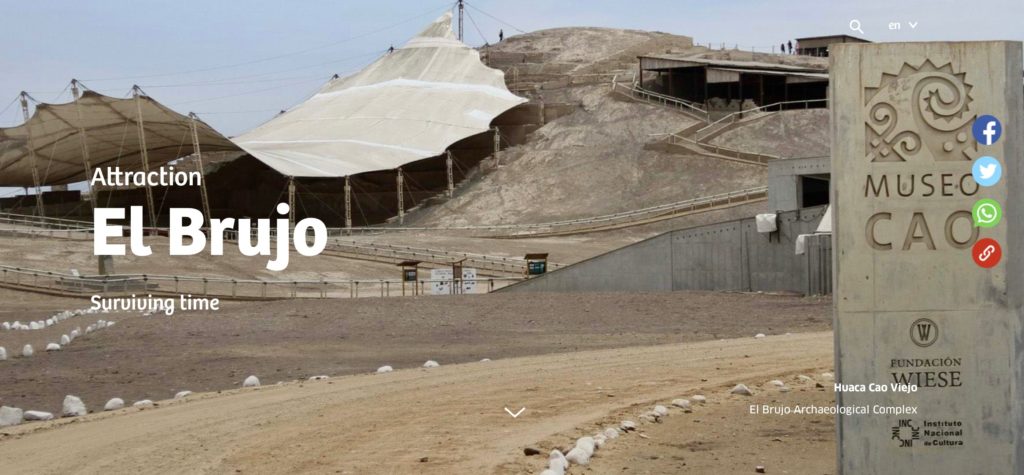
Part I – Shamanic Use of Wachuma: The Setting and Ritual
Below: A picture of the shaman at the El Brujo site explaining the fresco of of the main, fierce Mochi Diety, Ai Apaec. Here Ai Apaec is depicted as a scowling sun disc, surrounded by snakes and ocean waves. This diety also has an aspect where he appears in the form of a snake, or a spider or an octupus, all with a human face and other animal features thrown into the mix.
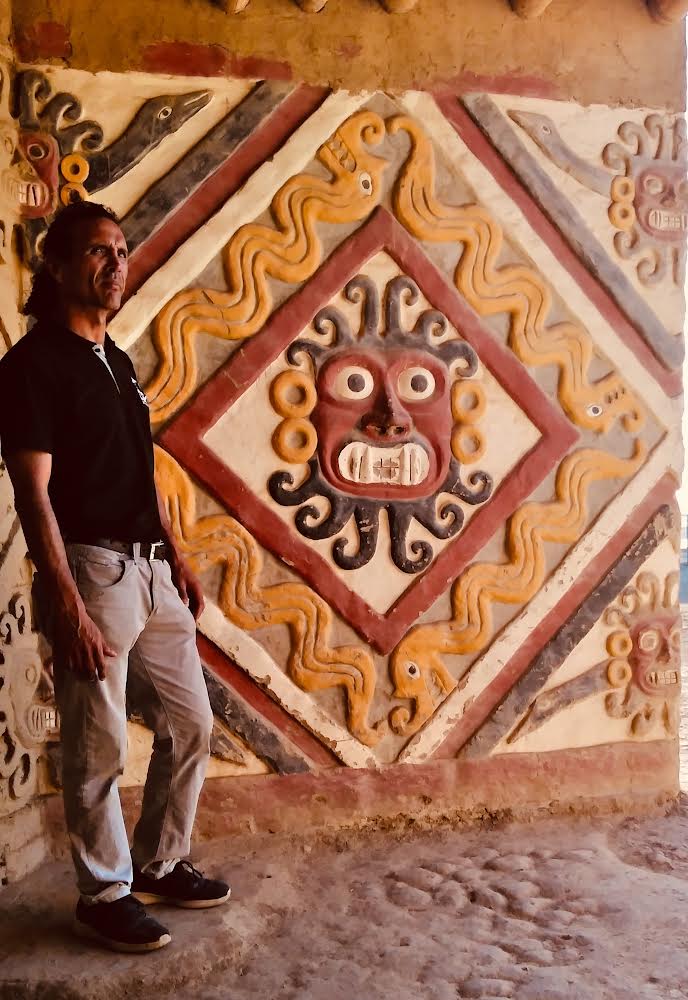
Below: Is this the picture of the modern day Dama de Cao or just another participant in our Ceremony? You decide. This figure is standing just to the right of the shaman depicted in picture one above You decide.
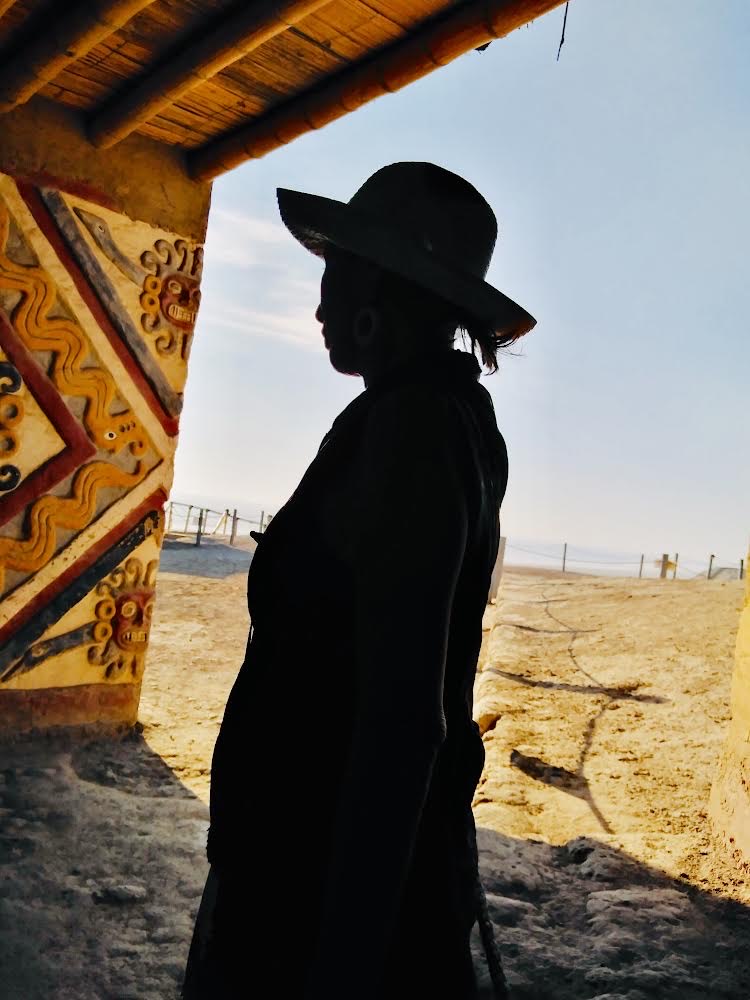
Below: A ceremony participant taking a photo of the poster for the mummy of the Madame de Cao on display in the museum, closed at the time of this photo. The wording reads — above the picture: “Discover the face of the Madame of Cao.” Below the picture: “She waits for you.”
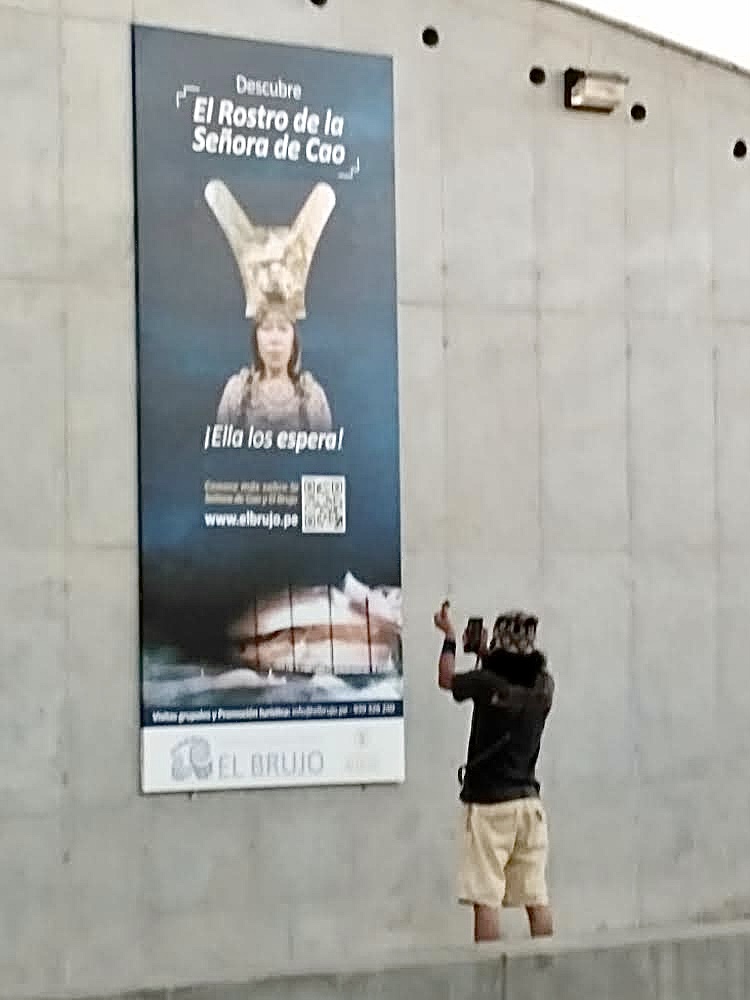
Below: The campsite where we held our wachuma ceremony. The central focus of the ceremony, the small sacred rock outcropping, called a hueca, is behind us. In front, we were on a beautiful beach on the Peruvian Pacific Ocean.
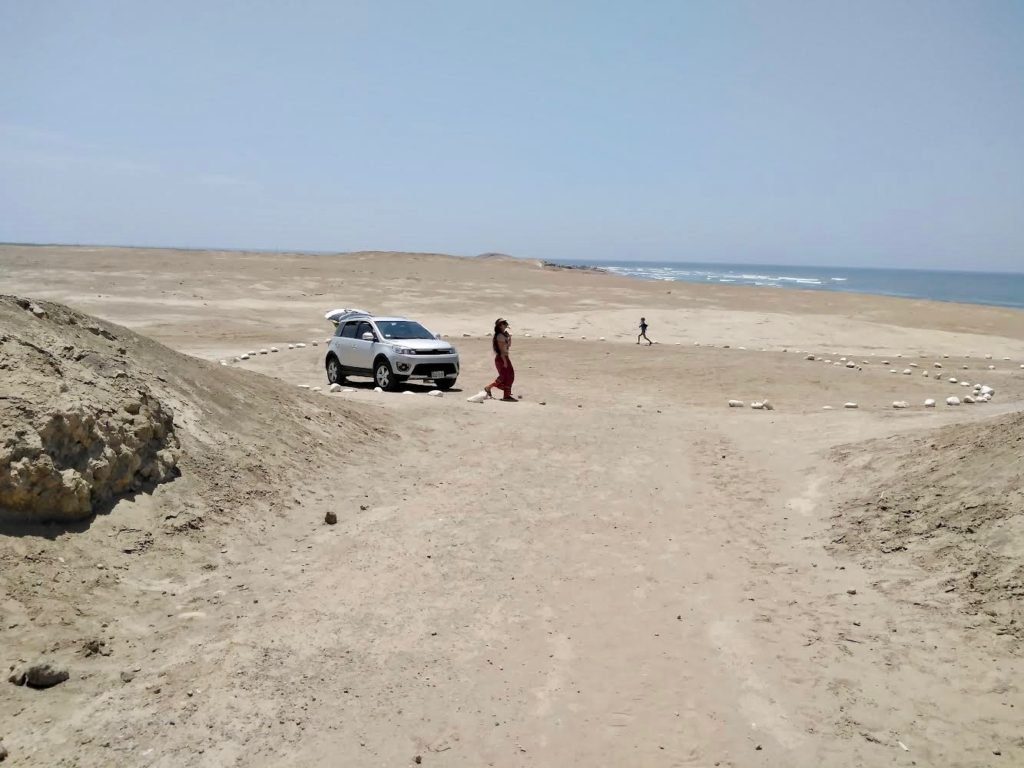
Below: Same location as the above picture. Except now, the photographer has his back to the ocean and is looking in to the small rock formation, the sacred hueca.
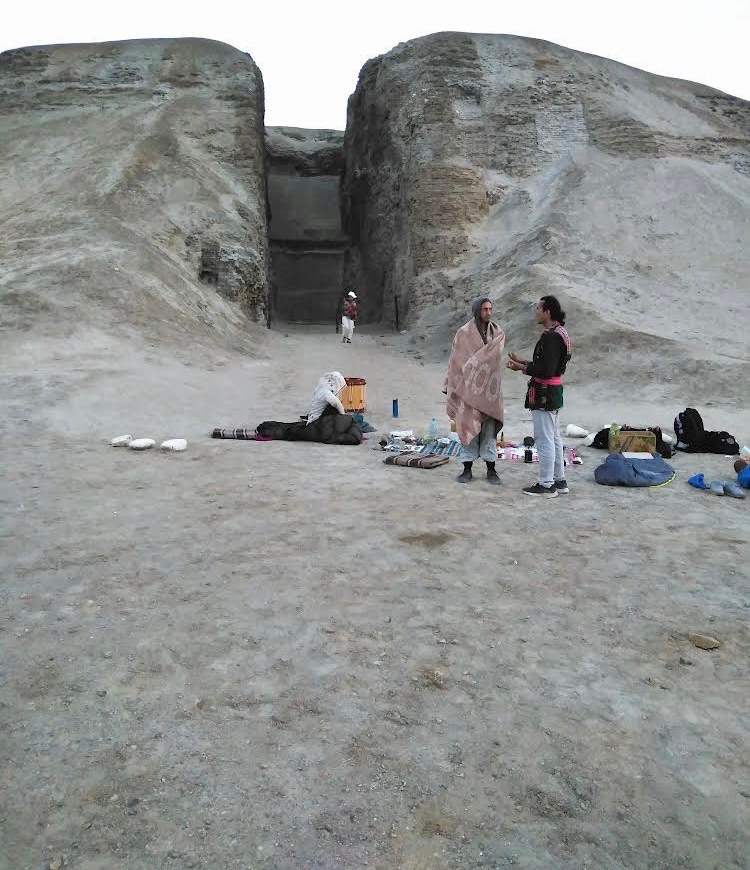
Below: The Shaman setting up his Altar before the Ceremony. Note: this photo is from a second wachuma ceremony I attended. This Ceremony took place not at El Brujo, but in the nearby sacred mountains, the home of Apu god-like spirits. The mountains and Apu were near my home town of Huanchaco; all in the region of Trujillo, a major Peruvian city on the Pacific.
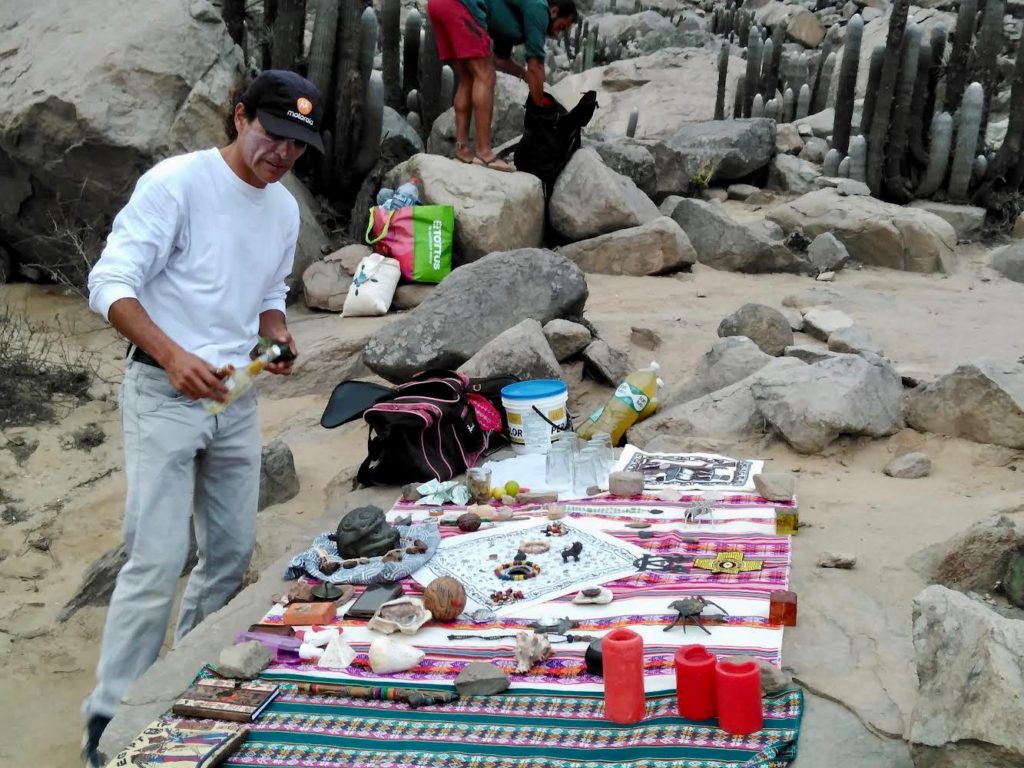
[Part II below is a reflection about the effects of wachuma. Part III is a humorous – but accurate – description of the actual ceremony.]
Part II – Reflections on the Hallucinagenic Experience
This section is largely taken from thethirdwave.co: “After consuming San Pedro, most people start to feel the effects within 15-40 minutes, but it could take up to three hours to peak. Coming down can take another three hours, and the whole experience usually lasts 10 hours or so. San Pedro also usually leaves a lasting afterglow, which can make it difficult to sleep after the effects wear off. [1]
“Many people are surprised at how different San Pedro (and mescaline, in general) is from other psychedelics they’ve tried. San Pedro can leave you feeling relaxed and in control, for instance, even if you’re tripping heavily. [2][3][4][5][6] One user compared its effects to MDMA, but felt they were “more amazing.” “Mescaline didn’t feel like rolling [being high on MDMA],” he said, “Rolling felt like mescaline.” The same user went on to say that it was “like all the best effects from all the drugs all put into one… the great body feeling and incredible empathy and understanding of ecstasy… the focus and energy and drive of acid… the journey effect that I always enjoyed from shrooms… It was the soberest we had ever felt in our life.”[4]”
“When the effects of San Pedro first hit, it’s common to feel drowsy or dizzy, often with a sense of tingling or electricity in the veins.[7][5] Nausea, vomiting, and perspiration are also common on the come-up.[8]”
“San Pedro usually produces visual effects, including whirlpools of colored light, flashes in the peripheral vision, kaleidoscopic patterns, and white, ghostlike outlines around people.[8] “Out-of-body” experiences are also common, as is synesthesia (e.g. “feeling” and “smelling” sights and sounds), mild depersonalization, and distortions of spatial awareness.[9][10][8][11][12] At the same time, ordinary things around you can appear more interesting, beautiful, and amazingly mystical—qualities that define the mescaline experience.[13]”
“All of this often culminates in a clear and connected thought, self-realization, empathy, and euphoria. However, “bad trips” and dysphoric symptoms may be more common among people who don’t pay attention to set and setting and/or have histories of mental illness.[14]” *******************************************************************************************************
A Personal Reflection Shared with this Travelogue Author A participant in this New Year’s shindig sent me her thoughts on the wachuma experience:
“Shortly after getting home for El Brujo, I scraped my brains off the ceiling. Restored, I sat down and wrote this personal reflection on what I experienced on wachuma:”
“Connection I sat for a long time feeling connected to the ground, to the earth, to the universe. It was a cold night New Year Eve, but some psychonauts went barefoot. Why? The participants wanted more connection with the deep ground. The very land we walk on is part of Pachamama, Mother Earth and I wanted to be connected to source.”
Integration The different parts of the personality were then, and are still currently, integrated. The rough functioning of certain aspects of my mind are now integrated into a more unified whole. This element is a hard one to explain”
“Warm Emotions Feelings of love, acceptance, certainty, and approval. I had a feeling of love generally – love of the earth to me; and my love for the earth: all of creation was enveloped in love.”
“Visual distortions San Pedro cactus is synonymous with hallucinations. However, these distortions do not have the same scary overtone of the word ‘hallucination’ – a spooky, potential horror movie effect kind of hallucination. I was always aware that the distortions were an effect of the drug and are, to a degree, below the control of my mind. There are two types of distortions: eyes open and eyes closed. You get both kinds of distortions or hallucinations with wachuma. I have read about this medicine recently. Those in the know say San Pedro is the most unintoxicating of all the hallucinogens. That is to say, you are always aware that you are experiencing the effects of the drug.”
Is wachuma a beneficial experience? What do I know? Don’t listen to me; listen to the good Dr. Roland Griffith being interviewed in Fortune magazine. Dr. Roland Griffiths is the director of the THE JOHNS HOPKINS UNIVERSITY CENTER FOR PSYCHEDELIC & CONSCIOUSNESS RESEARCH:
“Psilocybin and other psychedelics also produce neuroplasticity, which increases psychological flexibility and openness. This often leads to psychological insights. A brain on psychedelics is also more interconnected. In a normal brain, visual regions talk primarily with each other, for example. When the brain is on psychedelics, communication happens more broadly. Psychedelics also decrease activity in the default mode network, a brain network implicated in a sens of self, or ego. A brain on psychedelics tends to be more childlike, playful, imaginative, and creative—and less judgmental. Think of taking psychedelics like rebooting a computer to clear out glitches, except when the computer restarts, it has a new outlook on life.” https://fortune.com/longform/psychedelic-drugs-business-mental-health/
Part III – A Trip Advisor Tour with Shamanic Wachuma
This parody of a Trip Advisor Ad describes the New Years San Pedro Cactus Psychedelic Ceremony. Just in case: Trip Advisor is a huge, on-line tourism service. One of their main services is to offer up lots of package tours in just about every locale in the world.
Party with Wachuma on New Year’s Eve at Ancient Temple
A Cross-Cultural and Cross-Neural-Pathways Adventure!
On this tour, you will be whisked away from the tourist hustle and bustle and taken to the bucolic El Brujo Archeological Site. You will have a private, after-hour tour of the Temple and cemetery. Then, your local shamanic guide will take you safely on a trip using the hallucinogenic San Pedro cactus, called wahuma by the locals.
Preparation note: For the three days before your trip, abstain from meat, alcohol, spicy food, sexual activity, sugar, etc. Eat little or nothing on the day of your scheduled trip — you max out with a normal breakfast and small salad for lunch. Don’t worry about dinner. You will not be eating dinner.
We will pick you up at 2:00 pm at your hotel for the ninety minute drive to the El Brujo Temple Ruins. El Brujo houses the mummy of the Dama de Cao, Peru’s most famous mummy.
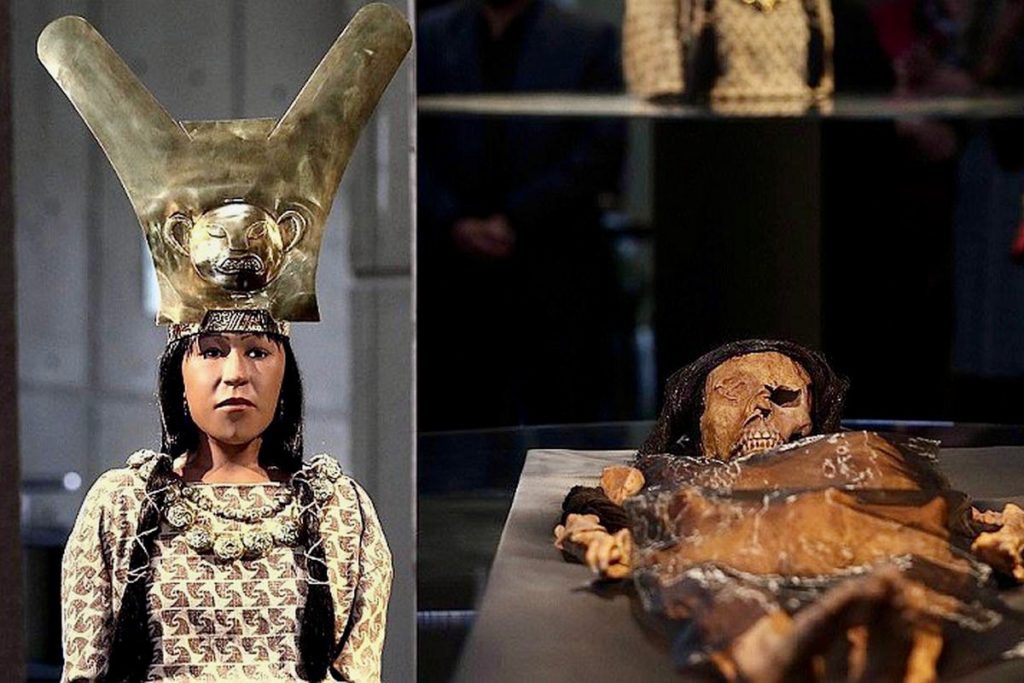
We arrive at the site after the museum has closed, but the waiting guards will open the locked gates for us. You will hear the loud clang as the gates shut tight behind you — but do not be worried! Your shaman guide knows all and everyone! Bypassing the closed museum, your shaman will fill you with awe and spooky delight as he explains the pre-Incan cemetery and Temple that is El Brujo. You will see the tomb of the Dama de Cao, the Queen of the Mochi people. The Dama de Cao ruled 1,000 years before the Incas swooped in to conquer the Mochi. The shaman will explain the role of the San Pedro cactus (wachuma) in Mochi culture. The shaman, a Mochi descendent himself, will tell you how the Mochi used wachuma to both divine the future, and to heal the sick. Finally, the shaman will explain the Mochi icons, symbols and gods; including the Dama de Cao’s extensive tattoos, which some say mirrors the plot development of the movie “Matrix.” [This is all true, Ed.]
Your guide will take you behind the public Temple scenes. You will take a short walk to the old (I mean ”old”) Mochi water well. You descend down the ancient rocks, down the spiral steps, almost into a cave where you are met by fresh spring water. At the well, you will be free to perform any ablution (ritual washing) you want. Afterwards, the group will walk back to the El Brujo entrance gates. The guards will mysteriously appear out of nowhere, and swing open the locked gates for your convenient exit.
The shaman comes out last from the gates. He directs you to a short walk to a nearby campsite, nestled between a picturesque Pacific beach and in the shadow of another small Huaca (Temple) of the Mochi. You will set up a minimal camp at the base of this Temple and assemble your tent or a tent will be provided. You then have a little free time and hike around to enjoy the beach or climb the ancient Temple. Ignore the human bones or the occasional human skull in the surrounding tiny sand pits that look like completely dried vernal pools. Ponder the sand formations that look like a recent burial mound. Wonder: Who the hell is still using these ancient sacred grounds for modern rituals and burials? Enjoy a breathtaking sunset over the Pacific Ocean.

As night draws near, your shaman will then guide all participants in the wachuma ceremony. The Ceremony starts with a complete introduction to the worldview of expanded wachuma consciousness. When the shaman finishes this introductory seminar, the proper wachuma ritual begins. The shaman pours everyone a stiff drink of wachuma juice from a paint can. He adds a spritz of lime juice to every glass, as if they were margaritas. The shamanic host then goes through a toasting ceremony — a brief dedication to the role of one of the five Mochi primal elements —earth, air, fire, water and ether — in maintaining a balanced universe. Participants are encouraged to add their own thoughts about how they identify with this one element; for example, the symbolism of fire in your life. The shaman announces “Skol!” or the Mochi equivalent, and everyone pours the wachuma down their throat.
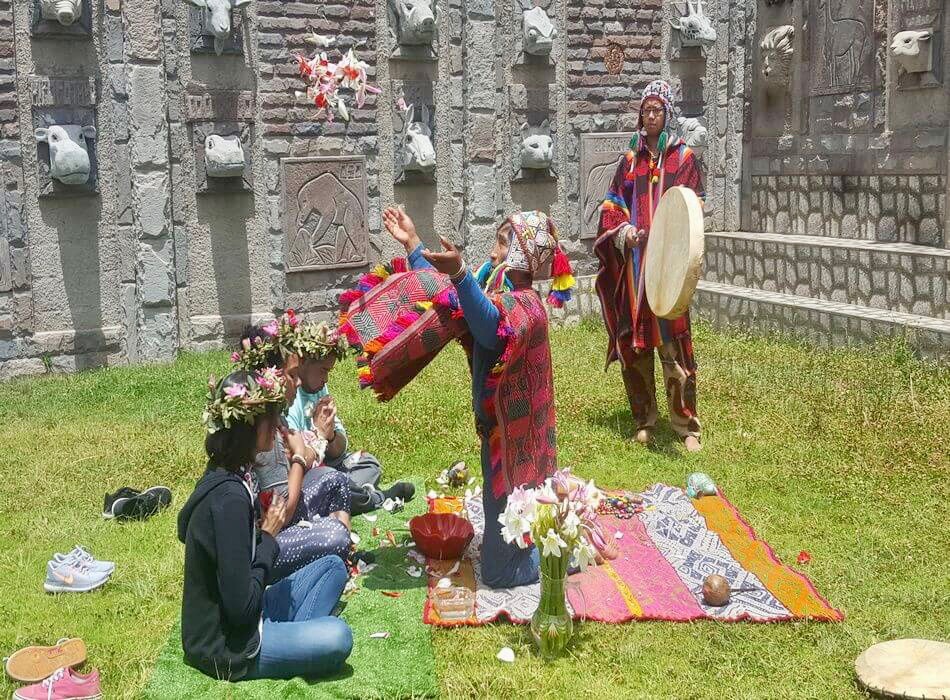
more than make up for it.
The wachuma taste sorta like kombucha with a kick, and can cause stomach distress. Many people feel a little queasy but a few escalate — up to and including, losing that minimal morning breakfast. The shaman refills your glass and adds another dash of lime juice. Participants all raise their drinks high to celebrate the next element, and then down this glass of cactus squeezings. On the ceremony goes for a total of five full glasses of wachuma. With a few concluding remarks, that’s it! Ceremony over.
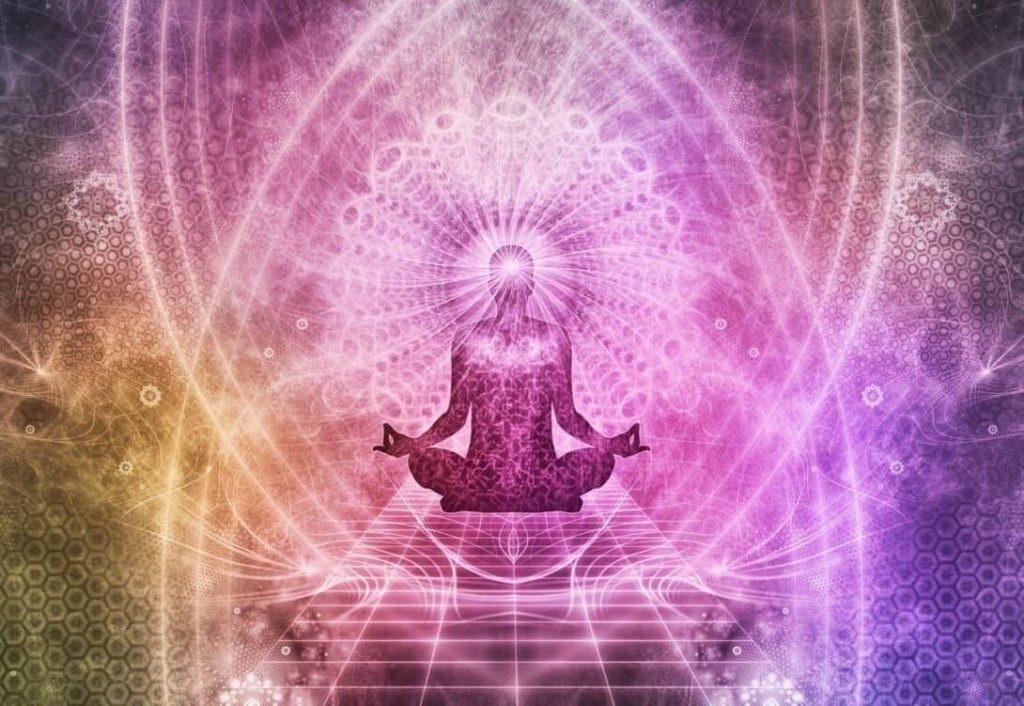
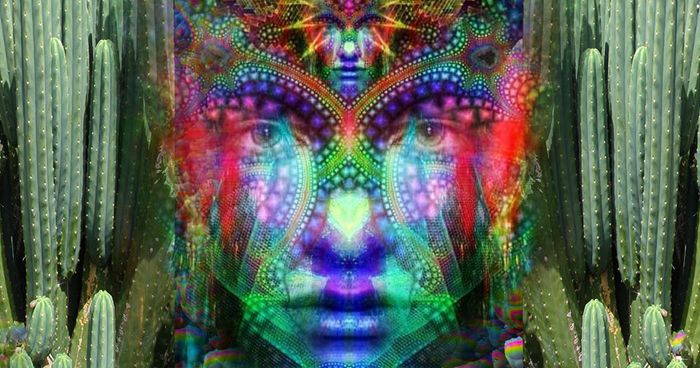
Thus, the whole ceremony is over, but your trip is just beginning. Starting in about thirty minutes, and for the rest of the night, you will enjoy raising feelings, thoughts, sensations and increased awareness that is provided by The God of Wachuma. Perhaps you will be more thoughtful and sit quietly; or be more social and coexist with others in boisterous conversation. Later still, you may walk about a bit. Your activities may change over time. However, please do not have extensive exploration of the site as the wachuma adventures are mostly mental and internal. Plus, the hallucinations will screw with you if embarking on some great hike. You will have distorted visions and indeed, some hallucinations, with both open eyes and closed eyes.
The next morning, you will to enjoy the declining effects of wachuma while reconnecting with everyday reality. You and other participants may choose to share food (usually fruit, bread, nuts, and the like,) tall tales and true insights. Feel free to stroll around, both on purpose and aimlessly, until it is time to disassemble the tents and pack. It is now time to jump in the waiting SUV or rice burner to return to the town and your real life. Your shaman will drop you off at your hotel. As your shaman waves goodbye, if you are lucky, your brain will fire up a thousand hands fluttering by. That is a sign that the wachuma has not abandoned you yet. The Trip Advisor Adventure just ended, but the experiences and insights are still within you.
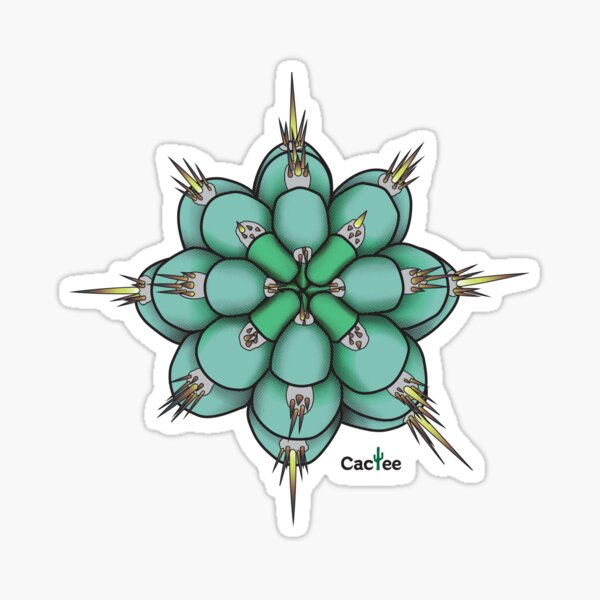
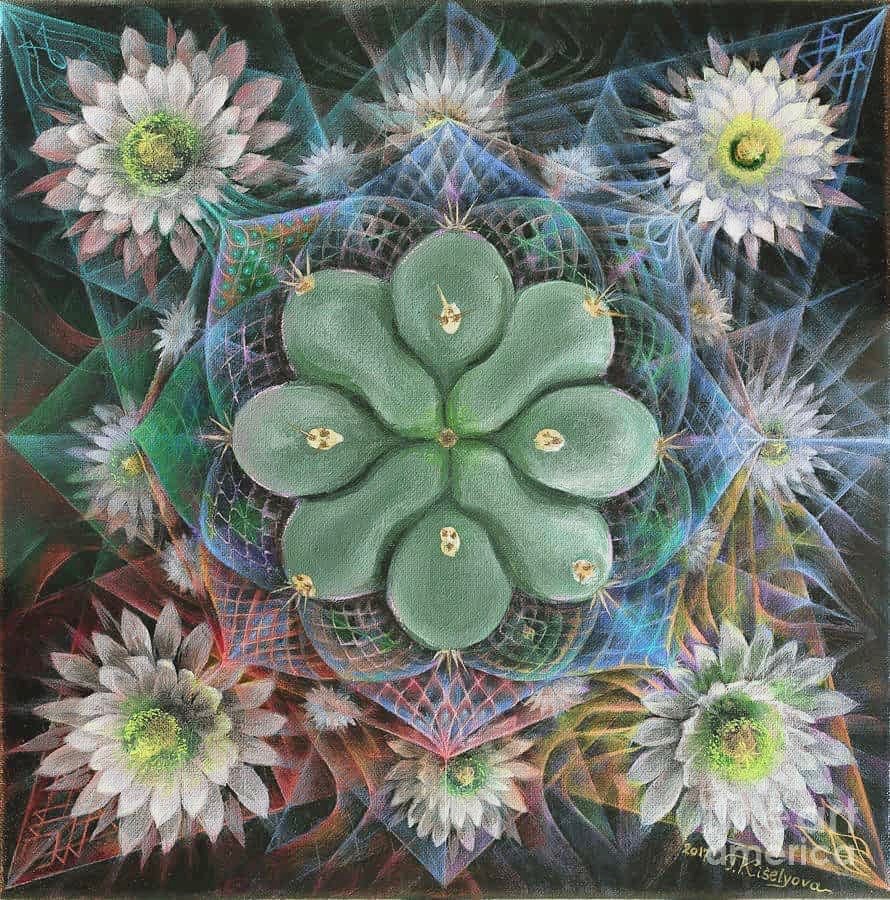
Cost: $58 USD or (164 Peruvian soles). Please bring a tent or sleeping bag, but you may not use them.
What is included: transportation, hallucinagenic drinks (5), tent if needed, admission to the El Brujo unless the guards swing open the gates and let you in for free. Trip Availability: One Saturday per month — the shaman announces the next Ceremony on his facebook page Location: Varies — sometimes at El Brujo, or perhaps on a sacred beach site, or up in the nearby mountains where lives Apu, the Ancient Spirits. ************************************************************************************* End of Tourist Brochure
Final Comment. Please: This article was written for entertainment or educational purposes – not to encourage or advocate for the use of this drug. IF you choose to take it, only try wachuma where it is legal. Unfortunately, this drug is legal only in far-flung places like Peru, South America; or Boulder Colordado USA; or heck, the whole state of Oregon, apparently.
Shameless Plug. Please consider signing up for a FREE subscription to this website which is both a travelogue and literary journal. Notices of new postings, about three new articles a month, will be sent to your email inbox. Note: Your information will never be marketed, sold, or used in any way. The marketing of personal data is a horrible idea.
